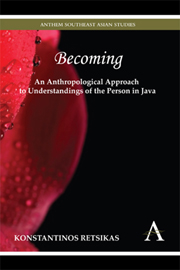Book contents
- Frontmatter
- Contents
- List of Maps and Figures
- Acknowledgements
- Prolegomenon
- Map
- Chapter 1 The Becoming of Place: Moving, Clearing, Inhabiting
- Chapter 2 The Perception of Difference: Embodying, Reversing, Encompassing
- Chapter 3 The Blood of Affinity: Marrying, Procreating, Housing
- Chapter 4 Matters of Scale: Feeding, Praying, Sharing
- Chapter 5 A Pulsating Universe: Annihilating, Enhancing, Magnifying
- Chapter 6 The Marital and the Martial: Gendering, Killing, Oscillating
- Epilogue
- Bibliography
- Index
Chapter 3 - The Blood of Affinity: Marrying, Procreating, Housing
Published online by Cambridge University Press: 05 November 2012
- Frontmatter
- Contents
- List of Maps and Figures
- Acknowledgements
- Prolegomenon
- Map
- Chapter 1 The Becoming of Place: Moving, Clearing, Inhabiting
- Chapter 2 The Perception of Difference: Embodying, Reversing, Encompassing
- Chapter 3 The Blood of Affinity: Marrying, Procreating, Housing
- Chapter 4 Matters of Scale: Feeding, Praying, Sharing
- Chapter 5 A Pulsating Universe: Annihilating, Enhancing, Magnifying
- Chapter 6 The Marital and the Martial: Gendering, Killing, Oscillating
- Epilogue
- Bibliography
- Index
Summary
Disjunctive synthesis
The whole function of noble houses, be they European or exotic, implies a fusion of categories which elsewhere are held to be in correlation with and opposition to each other, but here are henceforth treated as interchangeable: descent can substitute for affinity, and affinity for descent.
(Lévi-Strauss 1988, 187)In the previous chapters, I have noted that the makings of mixed persons are explicitly attributed by the people of Probolinggo to the marriages of people of Javanese and Madurese ancestry, enacted over successive generations in the area locals designate as pedalungan. In addition, I have shown how the perception and experience of place centres round the unfolding of two key relations, i.e. relations of descent and relations of affinity. The present chapter affords the opportunity of delving deeper into the intersections of ethnicity, place and kinship through pursuing the ways that people in Probolinggo connect descent to affinity. This connection comes to the fore and is realized in the institution of the House.
In the present chapter and the following one, analytical concerns over body will be back-staged and the House will be foregrounded as the primary form the diaphoron person takes in the plateau of kinship. The House affirms the diaphoron person as pure difference for it amounts to the disjunctive synthesis of relations established through genealogy and relations traced through marriage. Such a synthesis is tense, unstable and far from equilibrium.
- Type
- Chapter
- Information
- Publisher: Anthem PressPrint publication year: 2012



